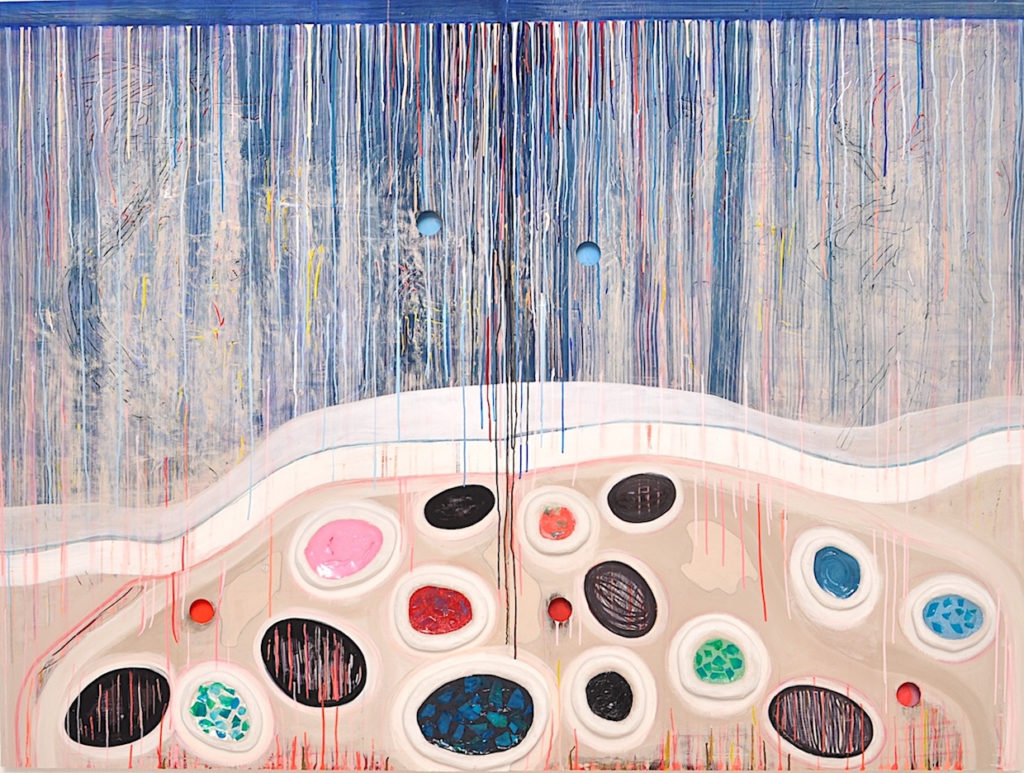
Theresa Hackett has been an artist for some 40 years and has always gravitated towards abstraction. Here, she discusses why she enjoys disrupting traditional ideas of painting and how the materiality of her canvases creates a play on words.
“Abstraction is a way to mix metaphor and language. After painting for many years, sometimes the ideas that come up are things that you did. I’ll be in the middle of painting, and a childhood memory will reflect in the work—some slight passing familiarity. There’s an odd cycling back where you think that you’re doing something completely new and then you think, ‘This is completely familiar, who am I borrowing this from?’ and you realize that you’re borrowing it from yourself. It’s about understanding your own personal language. You don’t want to keep using the same tropes over and over again, but after a while, you start to embrace them because they’re yours and they don’t have to be unfamiliar.
With any painting, there’s a figure-ground relationship—these basic formal languages that happen in a work. I pun on that relationship by actually using the landscape. I use actual ground in the form of diatomaceous earth to paint the foreground. It’s not about depicting reality, but making a reality. It’s a performative experience that exists in the act of painting, incorporating memory and turning it into form.
Diatomaceous earth is made out of little ecoskeletons. They’re kind of particles, really sharp little crustaceans. It’s used in animal feed as a pesticide and to kill slugs and insects. I use it as a clay substitute. When I add gesso to it, it makes a wonderful texture, allowing the pigment to absorb into the surface. When you work with acrylics, a lot of that layering you can use to remove your history or your past marks. But with the diatomaceous earth mixed with gesso, I can keep all of those past marks and retain the color. I had used plaster before, but this is more organic.
Big Rock Candy Mountain started with the idea of strange crustaceans of some sort. They were out of this world, in an almost sci-fi sense, because they don’t exist. Then I thought about how some things get really twisted or change over time. I was thinking about how somebody can say something, and then it turns into a game of telephone and changes its original meaning. For example, the song “Big Rock Candy Mountain” was actually about sticking it to the man and being against the whole establishment. But then the song changed over time to be a softer children’s song, even though it was really a radical song about working. I tried to incorporate that concept of an odd dissection or fraction between meaning and reality—Big Rock Candy Mountain is a diptych if you look closely. The two halves change, and there’s an optical illusion to it. It’s not necessarily what we see, but what it is.”


